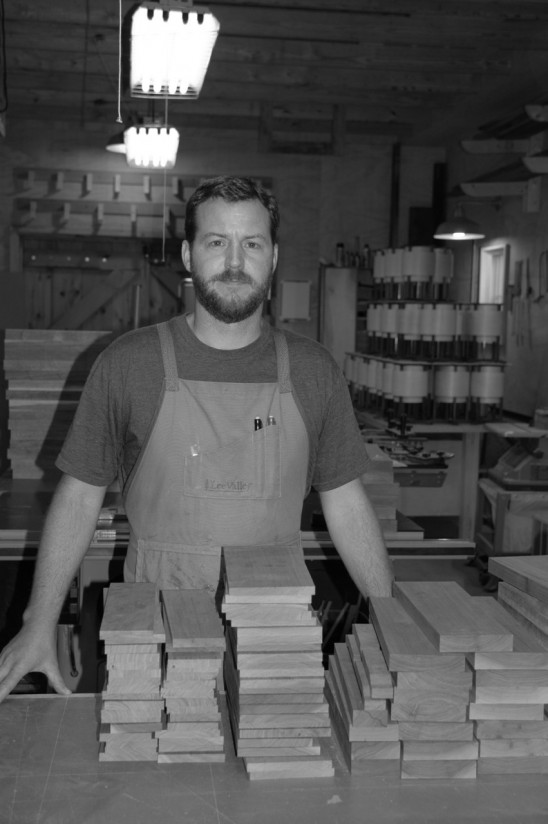
It’s no secret that we love wood designs here at UncommonGoods, and so do our customers. And because our first Woodworking Design Challenge was such a success with over 100 entries, we decided to host another one earlier this year! Once again, we weren’t disappointed with the heavy amount of amazing entries we received, Glenn Heimgartner’s submission being one of them.
When sifting through the woodworking entries, I knew that Glenn’s Wooden Wrap Lamp (at the time named the Audrey Lamp) would make it as one the semifinalists. Through just a single photo, I recognized Glenn’s solid craftmanship and fell in love with the lamp’s beautiful and simple design. When we finally saw the lamp in person, from the maple veneers to the black walnut base, my prediction of a well-designed, handmade product was proven correct. I secretly wanted to take the lamp into my own apartment and place it permanently on my bedside table.
Meet Glenn – a sustainable woodworker, soccer coach, father of three (who allegedly runs faster than a cheetah), and our latest Woodworking Design Challenge winner!
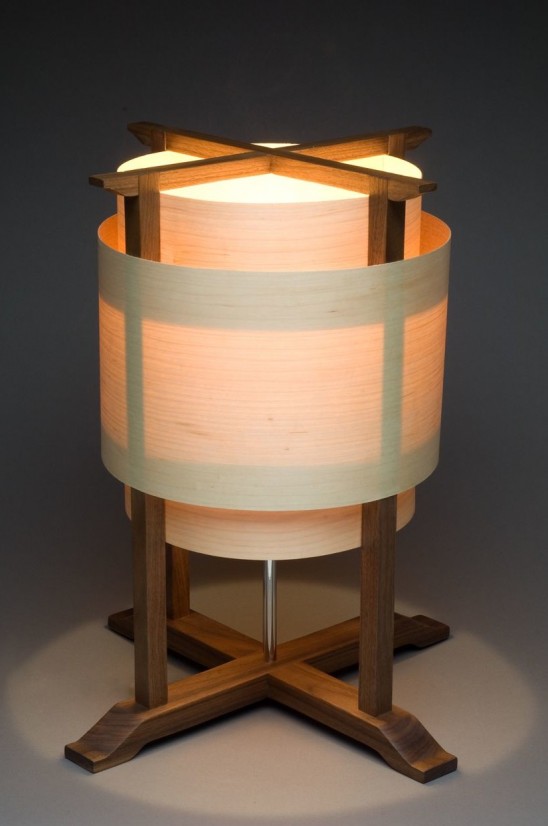
Can you tell us three fun, random facts about yourself?
1. I went to 4 different high schools in 4 years – including one in Japan.
2. I completed a 30-day expedition in the Yukon – no showers, no laundry for 30 days –undoubtedly one of the most amazing experiences of my life.
3. According to my 6-year-old son and his buddies, I run faster than a cheetah.
How did you come up with the concept of your Wooden Wrap Lamp design?
I had just finished a long stretch of building large, rather in-depth custom furniture pieces and was interested in changing gears and making something of a smaller scale that was more of a functional accent piece. Also, I had a large amount of walnut scraps that I wanted to upcycle instead of discard. I had been thinking about the idea of a lamp for a while and figured this was the perfect time, as I needed a holiday gift for a family member.
I had seen other lamps with the general construction of a solid wood base, 4 posts, and a top and always liked the look and feel of light shining through wood veneer shades. What resulted was the first version of the wooden wrap lamp, which is a blend of modern, arts and crafts, and Japanese design details with a natural, handcrafted feel.
How did you discover our Woodworking Design Challenge?
We’ve been getting the UncommonGoods catalog for years and my wife showed me the announcement for the challenge in the Winter Catalog – A WEEK BEFORE THE SUBMISSION WAS DUE. She urged me to submit and I figured since I just made a wooden lamp as a gift for a family member that it would be a good fit for UncommonGoods. Luckily I was able to set other work aside and get a refined version designed, built, and shipped on time.
How did you celebrate when you found out that you won our Woodworking Design Challenge?
Can’t say I did anything too crazy. I think I might have given my wife a high-five and then enjoyed a good beer. Was just honored and excited to know that others out there believed I created something of value.
What different techniques do you use when creating your designs?
For me it’s simple, I start with an idea that needs to meet an aesthetic need and perform a function. I do most of my design in my head – from the initial concept through fabrication – never stopping the internal struggle until the piece is complete. I sketch on paper and draft in 3D to explore proportions and details and to solidify my focus. I usually have a 3D plan to take to the shop and start fabrication.
Once I start to create actual parts, I trust my eye and will deviate from the plan, tweaking various details – thicknesses, proportions, radii of curves, etc. – to arrive at a more finished product. The piece is completed and sometimes it hits that comfortable balance between form and function – sometimes it doesn’t. If multiples will be made, I refine and rebuild. If it is ‘one-off’ custom piece, it is what it is at that point.
Can you walk us through the step-by-step process of creating your lamp?
I go through current inventory of walnut and purchase additional if need be. I ‘upcycle’ scraps from larger projects when possible. The selected walnut is milled into various pieces that make up the solid wood frame (2 base pieces, 4 posts, and 2 top pieces per lamp). Details on the ends of these base and top pieces are shaped via the router and by hand. Joinery is cut via basic machines and cleaned up via hand tools (base and top pieces are joined via lap joints; posts are joined to the base via mortise and tenons and to the top via bridle joint).
Pieces are glued to make the base and top respectively. Posts are glued to the base. Maple veneer is cut and glued in ring shapes to make the shades. All pieces are sanded and finished. Rings are glued to posts. Top is glued to the posts. Final quality control and touch up finishing is completed. Nickel hardware and electrical components are installed and light bulb is tested. Product is packaged.
Are there any major projects, collaborations, or ideas you’re working on now that you want to talk about?
First and foremost, I’m in full production mode in the shop handcrafting multiple lamps to meet UncommonGoods demands for the Winter Catalog! On the custom furniture front, I’m working with a few private clients designing various unique, functional pieces for residential settings (dining room table, library table, bench for a foyer, etc.). I’m also in the process of designing and prototyping two more home accent pieces for retail that will be of the same style and materials as the wrap lamp.
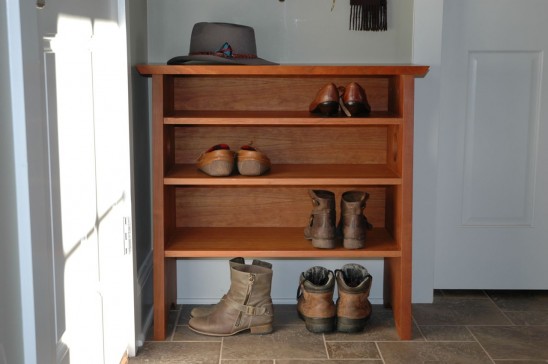
Other than making and promoting your woodwork, what other hobbies are you into?
With three amazing small children (ages 6, 4, and 1), I don’t have too much free time for hobbies. Luckily, my passion of woodworking satisfies most of my self-centered needs. When I do get a free second, I love the outdoors and exploring the nearby mountains on my own or with others. (I usually do a great one-hour hike right from my shop a few days a week.) I coach my oldest son’s soccer team and help my parents with their small farm. I’m fortunate to live in a town that has a great music scene and I see live acts whenever possible.
Where do you get your wood from and is it sustainable?
I have a professional background in sustainable forestry and sustainable wood products, so I am well versed on the land management techniques and supply chain logistics of such material and goods. I take pride in sourcing responsibly harvested wood from local forests and I purchase from local mills and small sawyers whenever possible. I mainly work in walnut, cherry, and maple, which readily grow in the forests of my area.
I also have worked in reclaimed chestnut, pine, and oak, which are usually recycled from demolished buildings. I work to minimize waste in project planning and ‘upcycle’ scraps from larger projects like tables into smaller projects like the wrap lamp. Shavings are spread on tree/shrub beds that surround the shop and are also composted.
What makes wood products special?
Wood is always alive, whether it is upright in the form of a tree or milled as a beautifully wide-planked tabletop. I am constantly fascinated by the idea that a tree can function as part of a forest (cleaning the air and water, providing wildlife habitat, and providing an amazing backdrop for outdoor recreation) and then be sustainably harvested to continue its life in functional and beautiful items such as furniture and home goods.
I love that a log can be milled in different ways (rift sawn, flat sawn, quartersawn) to result in different grain patterns and that every piece is different, exhibiting unique details like curly grain, pronounced figure, knots or worm holes. I always get excited to finish mill a rough piece to see what amazing grain is exposed. It never gets old smelling and handling this material on a daily basis.

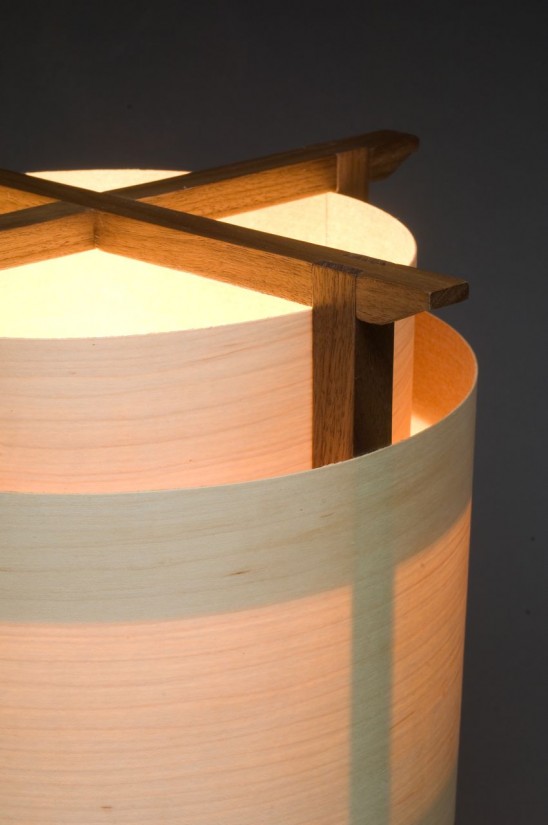
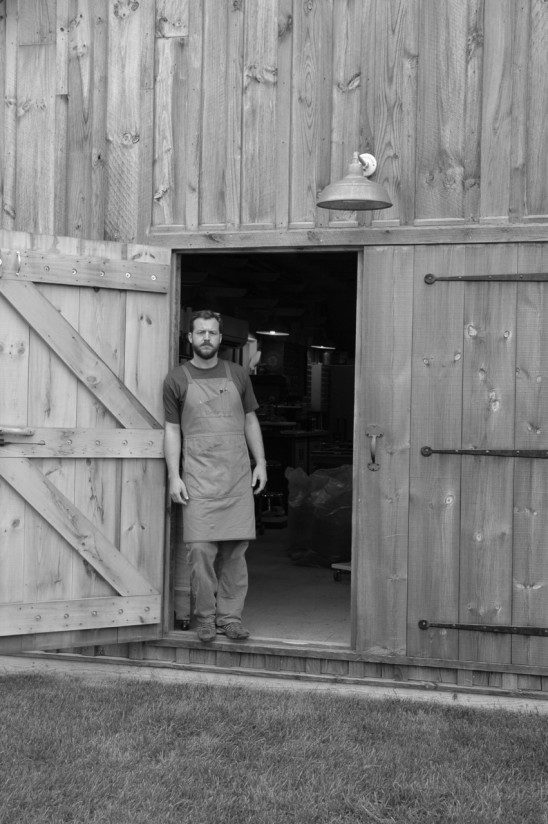
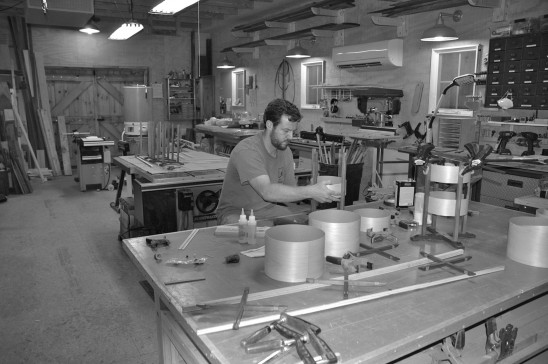
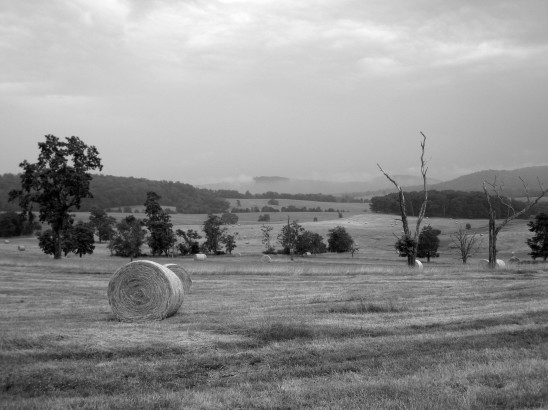
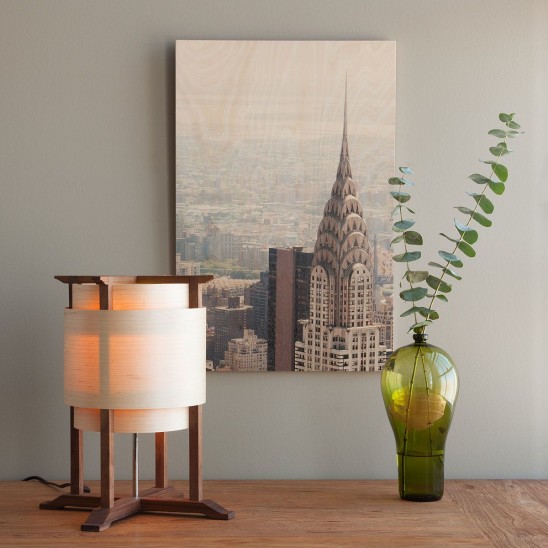
1 Comment
We live in Virginia. Do you have a studio that we could visit?